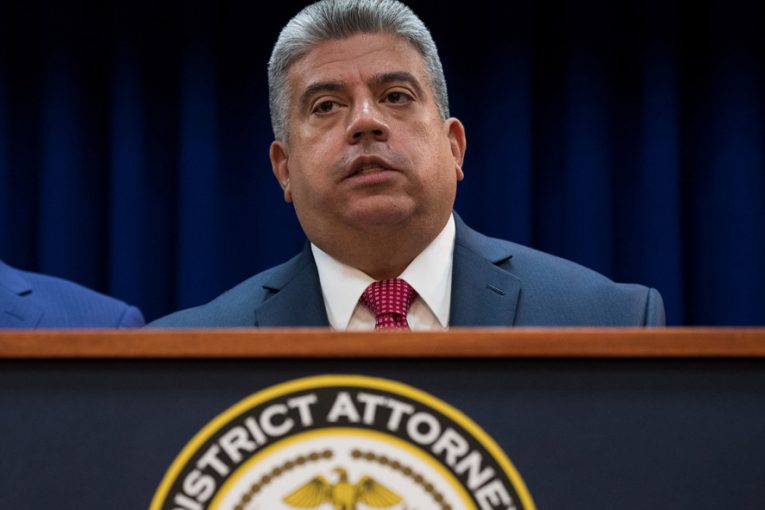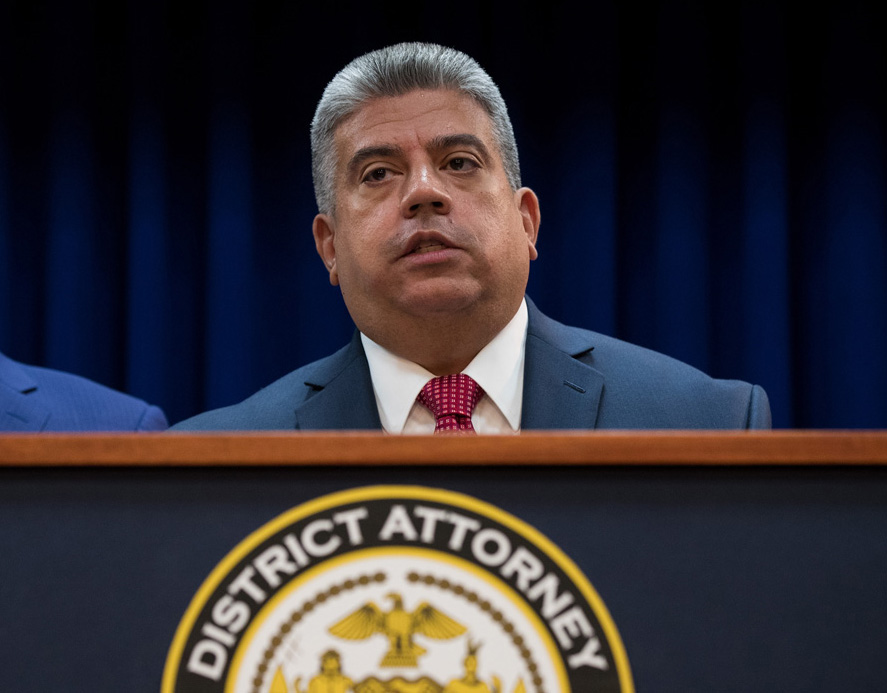

Implausible Witness Testimony Lead to Wrongful Conviction
By Stephanie Don
BROOKLYN – In 1997, an individual fired his gun into an apartment, killing one and leaving four others unharmed. After receiving information that identified Nelson Lewis, a pseudonym for the defendant, as the shooter and Lewis’ signed confession, Lewis was convicted of Second Degree Murder.
After serving more than 17 years in prison, Brooklyn District Attorney Eric Gonzalez and his office’s Conviction Review Unit (CRU) found that a key witness’s testimony was provably false and recommended that Lewis’ conviction be vacated.
Victims reported that a single gunman fired a gun through a door of an apartment with five individuals inside, killing one victim. Detectives soon received information that Lewis was the shooter and that his target was two men who had robbed him during a dice game.
Lewis agreed to speak with the police on the way to the precinct, and said he was with his family in Manhattan at the time of the shooting. However, once at the Brooklyn police station, Lewis signed a  confession saying that he was playing dice near the apartment building where the victim was killed.
confession saying that he was playing dice near the apartment building where the victim was killed.
Lewis’ wife later said that detectives coerced Lewis into signing a false statement. The CRU was unable to determine how reliable Lewis’ statement was, coerced or not, and found that it “only had a slight impact on the outcome” of Lewis’ trial.
One of the victims claimed to have seen Lewis approach through the Plexiglas window of the apartment door, but did not see a gun and did not witness the man shoot a gun. The CRU deemed this aspect of the victim’s testimony to be inconsistent, as it was unclear if the victim had seen Lewis before or if anyone else was outside of the apartment at the time. Additionally, a crime scene photo showed that there was low visibility through the Plexiglas window.
A second witness claimed to have seen the dice-game robbery and the shooting. The witness provided the information while in custody for a separate alleged robbery and was in custody for five months after the shooting. This witness was ultimately not prosecuted for the alleged robbery.
The witness testified at Lewis’ trial that she had seen the alleged dice-game robber and saw Lewis the afternoon of the shooting. However, her account of the shooting changed over time and was implausible in several aspects.
First, the witness claimed to have seen the start of the shooting while she was outside her apartment. Then, she ran 200 feet back to her apartment and saw Lewis still shooting through an apartment window.
Considering the shooting lasted only 10 seconds at most, it is unlikely that the witness was able to run 200 feet after the shooting began and view the ending of the shooting within her apartment. Also, the witness did not have any windows in her apartment that faced the shooting.
The CRU also found that even if the witness’s apartment had windows facing the shooting, “any view would have been from 300 feet during a stormy, rainy night and with obstructions in the way.”
Second, the CRU determined the witness’s account to be provably false, as the witness was incarcerated during the period she had claimed to witness the dice-game robbery and the shooting.
Although a diagram was used to illustrate the witness’s testimony and the court instructed that the diagram “could not be relied upon for distances,” these physical implausibilities were never explicitly shown to the jury during Lewis’ trial.
Lewis’ defense counsel admitted he had not been to the street himself, and the prosecutor said he had only been “on the block.” Therefore, neither counsel was able to determine if the physical aspect of the witness’s testimony was plausible.
Additionally, the CRU identified “potential motivations for the witness to provide false testimony against the defendant.” The witness did not come forward with information on the dice-game robbery or shooting until five months after the shooting, during which time when she had been arrested for a separate alleged robbery.
The CRU found that the delay in coming forward with information to be “a factor against her reliability,” but did not find evidence that the witness had been offered a quid pro quo, although she was not charged for her alleged robbery.
Furthermore, the witness had been arrested one day before the shooting, meaning she was in custody during the alleged dice-game robbery and the shooting. This witness was the only source of information about the dice-game robbery, which served as Lewis’ supposed motive for the shooting.
Because the witness could not have witnessed the dice game or shooting, it could not be proven that the dice-game robbery was a motive for the shooting.
Ultimately, the overwhelming implausibility of the witness’s account of the dice game and shooting led to the CRU’s recommendation that Lewis be exonerated. Lewis’ case was included in Brooklyn District Attorney Eric Gonzalez’s report with the goal of preventing wrongful convictions in the future.
To sign up for our new newsletter – Everyday Injustice – https://tinyurl.com/yyultcf9





